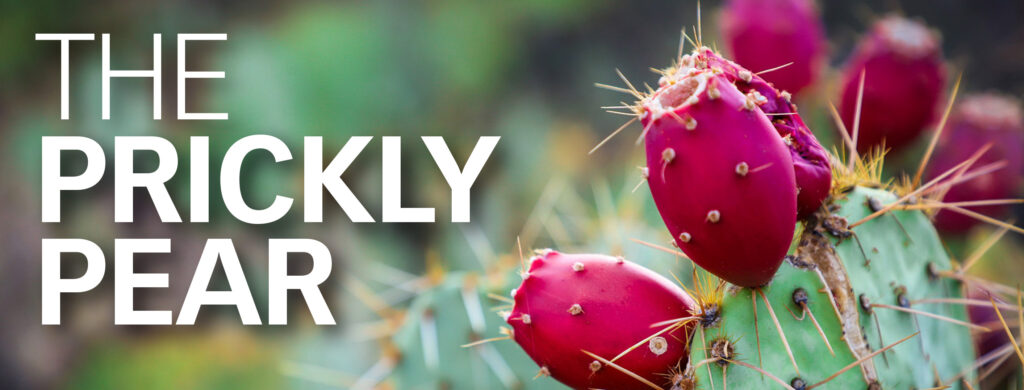
Prickly Pear is in the Opuntia genus; all 300 of the species in that genus can be found in arid areas of the Western Canada, US, and Mexico. The flat pads are called nopales in Spanish, and the fruits are called tunas. They are a good year around food source and have been used for eons by the Indigenous peoples of North America. In the Fall, the ripe prickly pears were smashed up, made into a flat cake, dried and used by tribes as a food source during winter.to prevent starvation.
According to Denee Bix, the Navajo nutritionist who owns Tumbleweeds Nutrition, a cup of smashed pears has only 60 calories but 5 grams of protein, and is high in Vitamin K and Calcium and low in carbohydrates.
The plant is honored by its incorporation into Mexico’s flag. An eagle, snake, and prickly pear cactus are seen in the middle of the national flag. It is based on the Aztec legend that an appropriate place for its capital city (now Mexico City) would be found by looking for an eagle eating a snake while sitting on a cactus.
Most colonizers in the US ignore the plant, probably because of their intimidating sharp spines and small, hairlike prickles called glochids. You can remove glochids from a tuna by rubbing it in the sand, roasting it, or rubbing it with a towel. Red tunas are the most prized. Some small businesses make prickly pear jam, chips, beverages, and salsa.
Lilia Avila, who sells through the Three Sisters Kitchen, shares her recipe for Prickly Pear salsa.
2-3 prickly pears – clean off the spines with cloth or knife
2 tomatoes
2 hot peppers (jalapeños, serranos, or green chiles)
½ onion
1 clove garlic
GRILL the above until blackened. Cut the prickly pear in half lengthwise and remove the seeds with a spoon. Add
¼ cup cilantro
Pinch of salt
Pinch of sugar
BLEND all above in a food processor . Enjoy on chips.
Prickly pear has a parasite called the cochinilla insect. These insects live in a white tunnel along the nopal and use the plant for water and food. According to Mexican shipping records in the 17th century, insects had more in value by weight than silver when shipped to England.. The British used the bright red dye from crushing these insects to dye their now famous cloth for their army uniforms, the Red Coats.
The annual Prickley Pear Festival features Indigenous knowledge of this fall fruit combined with many workshops on current uses. The festival is held usually in September at the Guiterrez Hubbel House at 5945 Isleta SW. The workshops are free. Time to try something new. People can live more sustainably in the mid Rio Grande Watershed.

